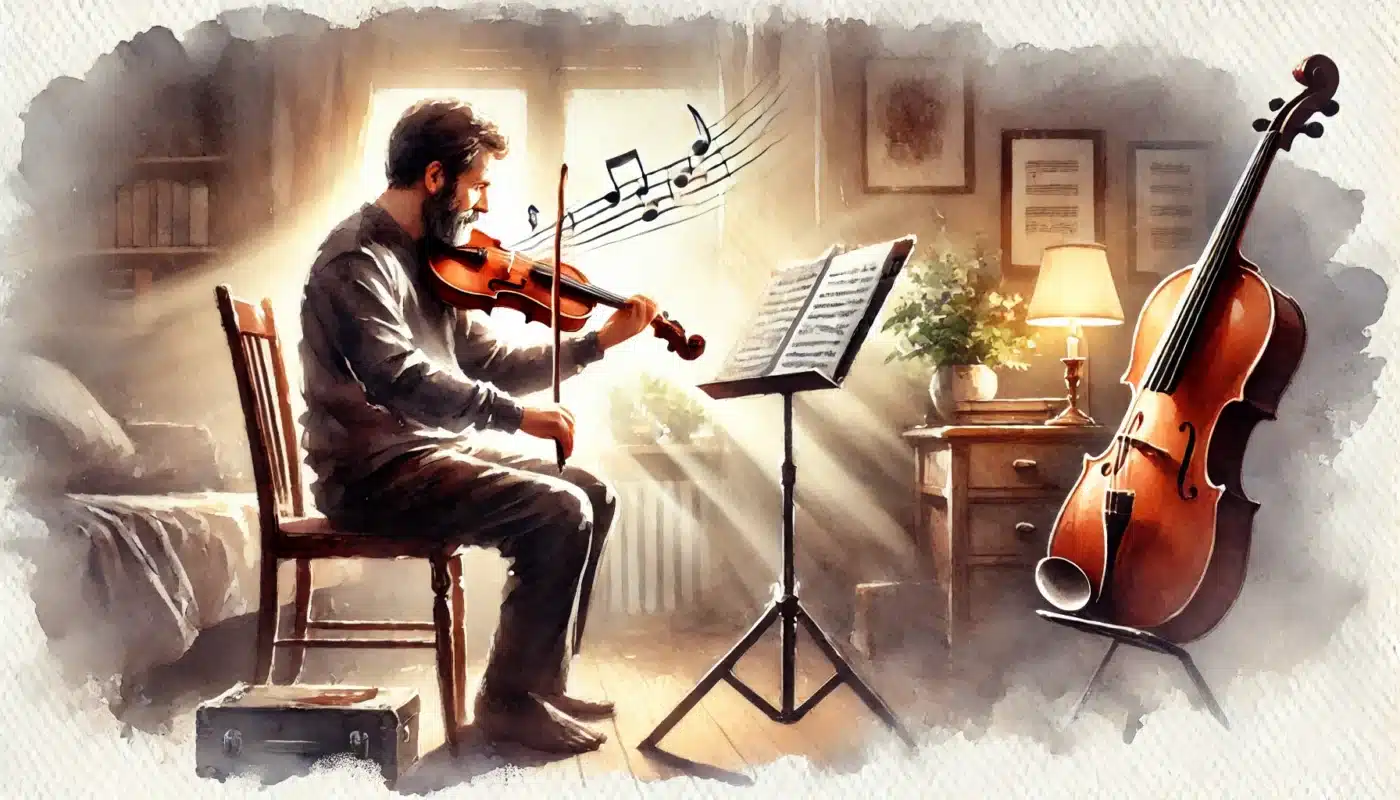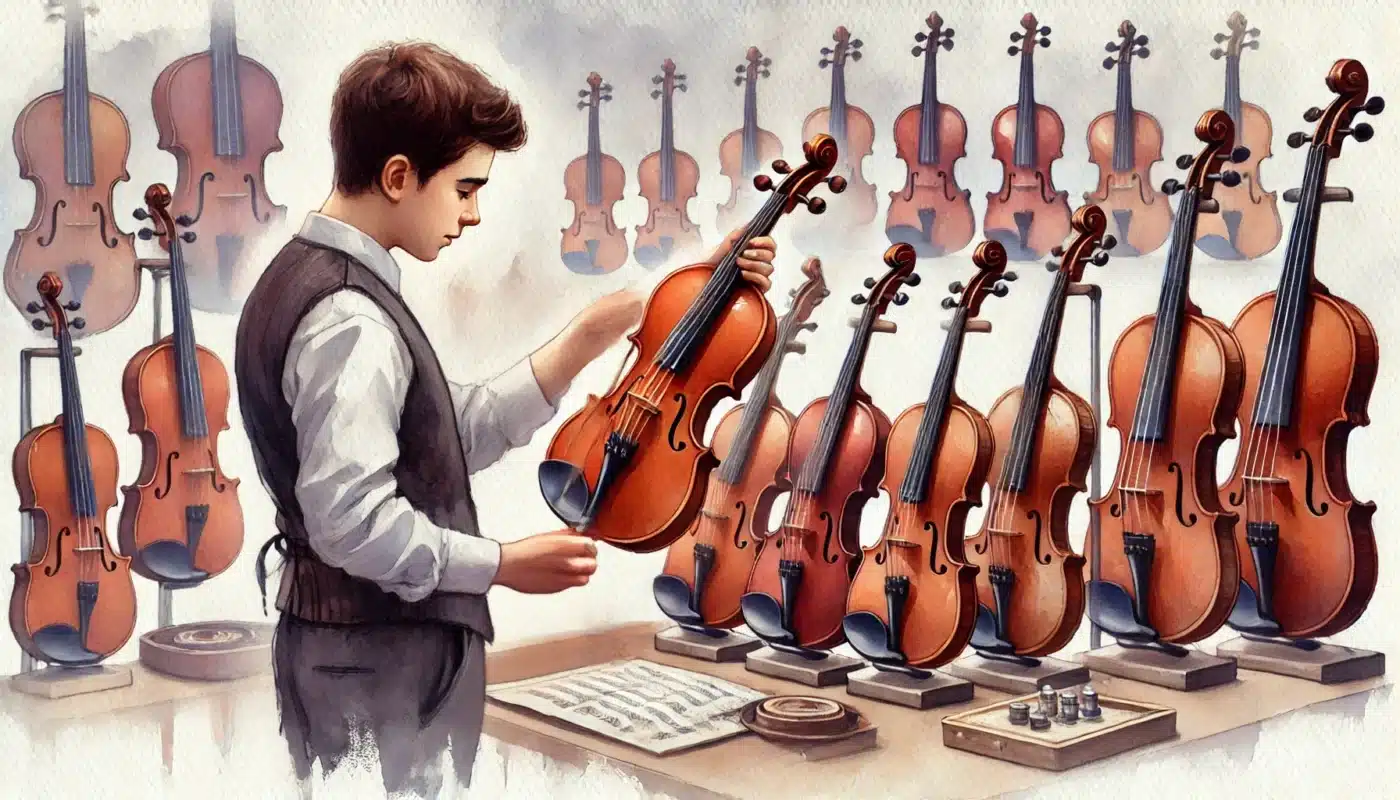Learning the violin is a journey that requires dedication, patience, and passion. Whether you’re starting as a child or finally picking it up as an adult, mastering the violin is both challenging and incredibly rewarding.
But how long does it actually take to learn the violin? While the timeline varies for everyone, understanding the basic skills and milestones can help you set realistic expectations.
Setting Realistic Expectations: How Long Does It Take to Learn the Violin?
Initial Phases (First 6-12 Months)
In the first year of learning, progress may feel slow, but this is when the most important foundation is built. You’ll spend time on the basics: learning how to hold the violin properly, getting comfortable with the bow, and understanding musical notation. It’s common for beginners to feel frustrated during this stage, but persistence is key.
I remember my own early lessons vividly. Holding the bow correctly seemed almost impossible, and producing a clean sound felt like a distant dream. But after several months of consistent practice, I noticed that the screeches were starting to turn into actual music. Within six to twelve months, many beginners are able to play simple pieces and scales, which brings a huge sense of accomplishment.
Developing Intermediate Skills (1-2 Years)
As you move into your second and third years, you’ll begin developing intermediate skills. This is where the fun really starts. Techniques like vibrato, shifting positions, and more complex bowing patterns are introduced. Mastering these skills can take months, but it’s during this period that you start feeling like a real musician.
This was the phase where I truly fell in love with the instrument. Playing scales felt less like a chore and more like an exercise in control and tone. I started exploring more complex pieces and enjoyed experimenting with different bowing techniques. By the end of this stage, you’ll likely be playing music that sounds rich and full, and you’ll start to feel more comfortable performing for others.
Advanced Techniques and Mastery (5 Years and Beyond)
Reaching an advanced level on the violin typically takes five years or more of dedicated practice. At this point, you’ll have mastered many core techniques and will be refining your tone, accuracy, and musicality. Advanced players often feel comfortable performing in public, tackling challenging repertoire, and even improvising across genres.
While mastery is a lifelong pursuit, after five years, most players find that they can enjoy playing a wide range of music at a proficient level. Personally, this is where I found the joy of performing for others. Even though there’s always something new to learn, reaching this level makes playing the violin deeply satisfying.
Is It Too Late to Start Learning Violin as an Adult?

It’s a common question: is it too late to start learning violin as an adult? The answer is a resounding no. Adults may face different challenges than children, but they also bring unique strengths to the table, such as discipline and focus.
In my own experience, starting in my 30s was intimidating at first. I worried that I’d never progress as quickly as a younger student might. But what I found was that my patience and dedication allowed me to stay focused, even when things were difficult. Studies have shown that adults can make significant progress with consistent practice, and many adult learners go on to become proficient violinists.
So, while you might not become a virtuoso overnight, starting as an adult is entirely possible—and incredibly rewarding. The key is to set realistic expectations, stay patient, and enjoy the process.
Fundamental Skills: Building the Foundations of Violin Mastery
Reading Music
One of the first major hurdles in learning the violin is becoming comfortable with reading music. In the beginning, musical notation can feel like a foreign language. You’ll start with the basics: identifying notes on the stave, understanding rhythm, and recognising key signatures.
Over time, reading music becomes second nature. I remember how daunting it seemed at first, but with regular practice, it quickly became easier. Many teachers emphasise sight-reading exercises and connecting what you read with what you play, helping to reinforce this critical skill early on.
Playing Scales
Scales are the bedrock of violin playing. They help develop finger strength, muscle memory, and pitch accuracy. Though they can be repetitive, scales are essential for building good technique and preparing you for more advanced pieces.
From my own practice, I’ve found that scales are a great warm-up exercise before diving into more complicated music. They reinforce the fundamentals of finger positioning and bowing, which are crucial as you progress. Regular scale practice also sharpens your ear for intonation, which is critical when playing an instrument as precise as the violin.
Introduction to Techniques Like Vibrato and Tremolo
As you progress, you’ll start working on more advanced techniques such as vibrato and tremolo. Vibrato involves rocking your finger on the string to produce a warm, expressive tone, while tremolo is a rapid bowing technique that creates a fluttering sound. These techniques add depth and character to your playing but require a solid foundation in the basics.
Vibrato was a game-changer for me. It took months of slow, deliberate practice before I could produce a consistent vibrato, but once I did, it transformed my sound. Tremolo, though used less frequently, is another technique that adds texture and emotion to more advanced pieces.
Choosing the Right Violin for Beginners

Choosing your first violin is an exciting, yet important, decision. The instrument you start with can greatly influence your learning experience, so it’s essential to find one that suits your needs and fits your budget. For beginners, violins don’t need to be expensive, but they should be of good enough quality to produce a clear sound and withstand regular use.
If you’re unsure where to start, visiting a violin shop is an excellent option. The staff at violin shops are often passionate musicians themselves and are happy to guide you in choosing an instrument. They can help you find a violin that fits your size, budget, and preferences, and even let you test out a few before making a decision. Plus, many shops offer rentals, which is a great way to try an instrument before fully committing to buying one.
In terms of specific models, many beginners opt for violins like the Mendini MV300 or the Fiddlerman Apprentice Violin, which are both affordable and functional for early learning stages. If you’re ready to invest a bit more, intermediate violins usually range between £500 and £1000, offering higher-quality craftsmanship and sound. Remember, as your skills progress, you can always upgrade to a better instrument later on.
For online research, websites such as Shar Music and Fiddlerman provide valuable resources and reviews on various violins and accessories for beginners. However, nothing beats the experience of handling the instrument in person, so take advantage of the knowledge and advice available in a violin shop.
Establishing a Violin Practice Routine
The key to success with the violin is consistent, mindful practice. For beginners, 30 minutes a day of focused practice is often enough to see steady progress. As you advance, you might increase your practice time to an hour or more, but what’s most important is the quality of your practice, not the quantity.
One lesson I learned early on was that practising mindlessly for hours can lead to bad habits. Instead, focused practice—really paying attention to your technique and sound—makes all the difference. Over time, you’ll find that even short, concentrated practice sessions can lead to significant improvement.
Tracking Progress: Key Learning Milestones for Violinists
Every violinist’s learning journey is unique, but there are common milestones to celebrate along the way. Within the first year, you’ll likely be able to play simple tunes and scales. By the end of your second or third year, you’ll have tackled more complex pieces and techniques like vibrato. After five years, many players feel comfortable performing advanced repertoire and playing for an audience.
It’s important to remember that progress is personal. Everyone moves at their own pace, and what matters most is enjoying the journey. The violin is a lifelong pursuit, and there’s always something new to learn.
My Individual Learning Journey: Embracing a Unique Path
When I first picked up the violin, I knew it wouldn’t be easy, but I didn’t realise just how personal the learning process would be. My journey has been filled with both struggles and triumphs, and I quickly learned that progress doesn’t always follow a straight line. Some techniques, like holding the bow and producing a clear sound, came slowly at first. I spent weeks perfecting the basics, while other skills, like reading music, clicked more naturally.
One of the biggest lessons I’ve taken away from my violin journey is the importance of patience. I’ve hit plenty of plateaus—moments where it felt like I wasn’t improving at all—but I’ve also experienced breakthroughs that made the hard work worth it. What I’ve come to appreciate is that every small victory, whether it’s mastering a new piece or improving my tone, is a step forward in my unique path.
Looking back, I realise that this journey isn’t just about becoming proficient on the violin, but about learning to embrace the process, the mistakes, and the slow growth. It’s taught me persistence, and it’s been deeply rewarding to see how far I’ve come, even if the road has had its twists and turns. No two violinists will have the same experience, and that’s what makes each journey special.
Becoming a Wedding Violinist: A Fulfilling Musical Path
Becoming a wedding violinist is a fulfilling way to share your musical talent on one of the most memorable days in a couple’s life. To get started, you’ll need to achieve a high level of proficiency, ensuring you can play a wide range of music confidently, from classical pieces like Canon in D to modern love songs.
Building a diverse repertoire is essential, as weddings often demand both traditional and contemporary tunes. Additionally, practice performing in various settings to develop the adaptability needed for live events.
Conclusion
Learning the violin is a deeply personal and rewarding journey, whether you’re a young beginner or an adult taking it up later in life. It requires patience, dedication, and a love for the music, but with consistent practice, the milestones you achieve along the way are more than worth the effort.
So, how long does it take to learn the violin? It depends on your goals and the time you invest. For most, becoming a proficient player takes around five years, but the joy of playing starts much sooner. The important thing is to stay committed, celebrate small victories, and enjoy the beauty of making music with one of the most captivating instruments in the world.
References
Shar Music. (n.d.). Violin buying guide. Shar Music. Retrieved from https://www.sharmusic.com/
Fiddlerman. (n.d.). Beginner’s guide to choosing a violin. Fiddlerman. Retrieved from https://fiddlerman.com/
Trala. (n.d.). How long does it take to learn how to play the violin? Trala. Retrieved from https://www.trala.com/

